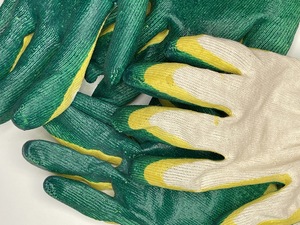

|
Edward Lowton
Editor |


|
| Home> | Health, Safety & Welfare | >PPE | >Sustainability in PPE and technical workwear |
Sustainability in PPE and technical workwear
27 January 2022
Sustainability is a concept we are only truly starting to understand in the context of PPE and workwear, writes Natalie Wilson

What we think we know about sustainable practices one day can quickly become obsolete as new innovative processes are developed. Over the last two years, the pandemic “broke” the supply chain of the global market for disposable single-use products. The volume demanded by consumers and industry alike was totally unsustainable – both in terms of the environment and in terms of the viability of the supply routes.
This is leading to a drive from users for industry to push forward with innovations which can improve the sustainable credentials of their PPE and technical workwear, including offering opportunities for circularity and cradle-to-grave solutions. To ensure PPE and technical workwear items are sustainably sourced, there are some key considerations, some having immediate impact and others that can be introduced over time.
Garments built to last
High quality garments that are built to last need replacing less frequently and therefore greatly reduce environmental impact. Designing, manufacturing and procuring garments that are built to last years, rather than months, will have the biggest and most immediate impact on sustainability. In almost all cases, this will require a change from buyers looking at price per item, to cost over the life of a garment, as well as the environmental impact of each product.
Selecting materials and trims
The selection of raw material and trims can be critical to the sustainability of any product and should be introduced during the design phase. Understanding the raw materials being used in any garment is key to ensuring the durability of the product and fitness for purpose, whether that’s for a high visibility softshell jacket or a flame retardant coverall.
Depending on the required performance or certification of a garment, there are a variety of sustainable raw materials that can be used. These include everything from organically grown cotton; fibres derived from waste sources such as PET plastic bottles, coconut husks or leftover coffee grounds; sustainable & fast-growing natural resources such as bamboo or birch; through to recovered fibres from garments at end-of-life. These fibres can have reduced environmental footprint of between 30-70% compared to virgin fibres, based on a mix of water usage and CO2 emissions (primarily depending on fibre type).
Global footprint of component parts
It’s also important to know the global footprint of the component parts – the raw materials and trims are often imported to the place of final assembly. This is an area which can be more difficult to track without real transparency across the supply chain. For example, whilst a garment manufactured in a near-shore factory may on the face of it seem absolutely lower carbon impact than an equivalent garment from a factory further afield, if the fabrics and trims have travelled thousands of miles before reaching the near-shore factory, there may not be as much difference as first appears to be the case.
It also requires fairly complex calculations to understand whether there is any difference in carbon emissions when a fabric is travelling from China to Turkey, before being manufactured and shipped as a finished item into the UK; compared with an Indian fabric being sent to Sri Lanka for production and then shipping into the UK.
End-of-life processing
Finally we need to consider end-of-life processing. Security is a key issue and always has been in the end-of-life disposal of garments, particularly for branded items. The complex construction of PPE and technical workwear has historically made these items more difficult to provide effective end-of-life processes but major advancements in processing these items means there are now a variety of providers offering these services.
The ultimate goal for end-of-life management of any garment is to create a circular economy which would see textiles being recycled back into textiles. In some areas, as an industry we have been able to achieve these goals but these are primarily applicable for single fibre fabrics such as polyester which can be processed back into the textile supply chain.
Natalie Wilson is a member of BSiF
Tel: 01442 248744
- Controlling hand-arm vibration in the workplace
- Workwear: The only constant is change
- PPE and safety product buyers urged to CHECK-SELECT-PROTECT
- Make 2024 the year you check for the BSIF shield
- BSIF extends strategic partnership agreement with Western Business Media
- Electrical safety during the maintenance process
- Cut through the noise: How to select safe hearing protection
- Always specify the shield
- Watch out for non-compliant PPE and safety equipment
- Speaking reality to power


















